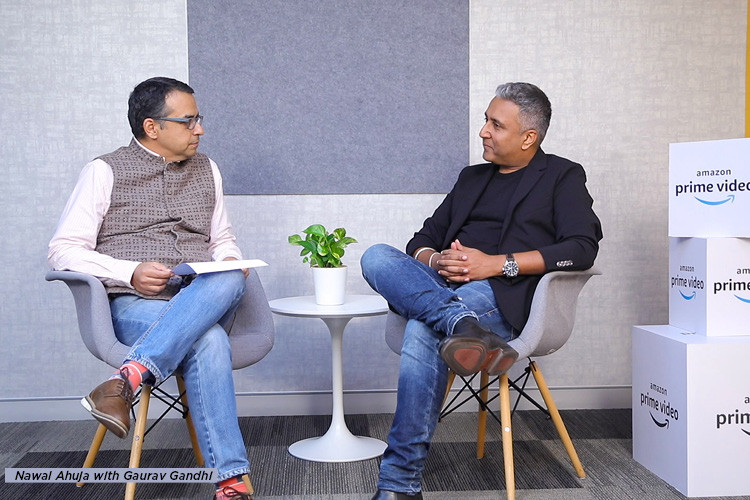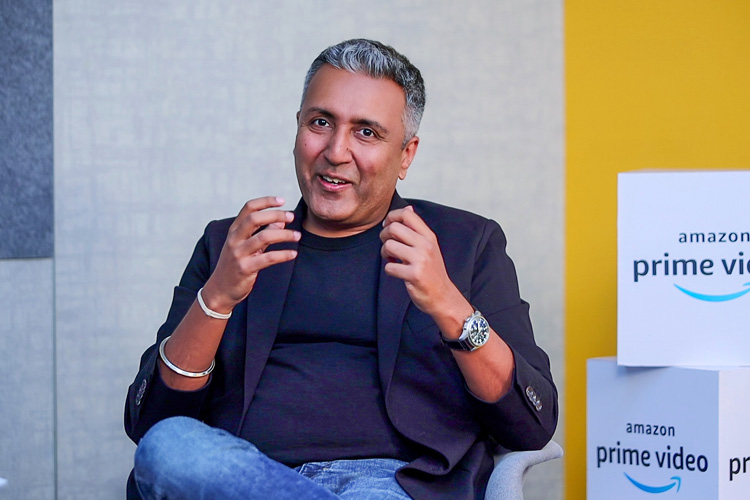Q] How has the video streaming industry evolved in India in the last five years that Prime Video has been here?
For us, at Prime Video, it has been a great five years. Our journey has been about super-serving our diverse audience in India. From Day 1, we have been thinking about programming in 10 languages and building a combination of original and licensed content. We have been super-serving with our originals, local originals, and movies across 10 languages and even localised products like Prime Video Mobile Edition, a marketplace model that we have launched with our channel partners which basically gives more selection to our customers. Prime Video is watched in 99% of the country’s pin codes today. We have seen our content travel not just locally, but globally. Today, customers can enjoy our content in over 200 countries.
I want to state two interesting things here. First, we have played a big role in expanding the linguistic palette of Indian customers. Today, 50% of our customers are watching content in four languages. One big change that has happened due to the pandemic is that the consumers are far more open to watching content beyond their native language. This not only expands the choice of content that customers can watch, but also expands the reach for creators. The second big thing is giving an opportunity to fresh and new talent. Nearly 50% of our talent in originals to date is the new talent both behind the camera, and in front of the camera. This number is expected to go up to 70% going forward.
Q] What is Prime Video’s vision for India and where does the country specifically fit into Prime Video’s larger scheme of things?
Prime Video’s vision for India is to be the most loved entertainment hub for customers, and when I say entertainment hub, it means that we will obviously programme, acquire, and create lots of shows and films for our customers. We also look at how we can add to the selection by building the entertainment marketplace. We brought the Prime Video Channels programme last year with many partners coming on board to provide their content for the marketplace. We have launched a movie rental service which is part of our marketplace programme. Between the original programming that we provide to our Prime members and the marketplace hub, we want to be the entertainment hub for our customers.
Beyond that, we want to be the home for talent. We believe in giving new talent and established talent a voice and an opportunity to showcase what they create. We play the role of an enabler in taking the content created by the creative guys to the customers. So, we are also playing the role of enabling the creative economy. Everyone in the streaming industry has contributed to it, but in the foundational years of the industry, we have played the role of giving unprecedented reach to content. At Prime Video, our objective is to take the content that our creators are producing to as many customers as possible.
Coming to the second part of the question, India is very important for Prime Video and we are deeply invested in creating original content and offering variety to our customers. We have a high proportion of Prime customers in India who are watching Prime Video every month. We are very excited about our journey here and like I said we are just getting started!

Q] What are your plans to build the original content slate in regional languages and do you see non-Hindi content travelling across borders?
The local language films have seen enormous reach outside their home state. In fact, 50% of their viewing has come from outside their state. If the preferred language of a customer is Hindi, we will create Hindi original content, we will acquire Hindi local language films, and we will see how other language content can be made available to that customer through subtitles or dubs. We also look at international content that can be made available through localisation or through sub-titles. And then we look at how that selection is suited to your taste.
This business is about segmentation and the fact that I want to create the right content for the right cohort of customers. It’s not about a broadcast to a billion but a billion unicasts. In that context, your taste, your mood, and your preferences could change and could be different from mine. Our selection for original content is like that. We will create a ‘Bandish Bandit’ but we will also create a ‘Made in Heaven’. We will also create a ‘Modern Love’ and a ‘Family Man’. You will see that width of selection even in films.
We want to cater to the diverse tastes of our customers in each language. Because of the geographical and linguistic barriers going away, the choice for our customers has expanded. So now when we are creating a local language content like ‘Suzhal’, we are thinking about how can that show be appealing to not just customers who like Tamil content but to customers around the world.
We have seen that 20% of our customers who are watching our shows are from outside India. That’s what has been keeping us busy and we are excited about the opportunity that crossed all kinds of geographical and linguistic borders.
Q] Prime Video has been aggressive in acquiring movies. You also did direct to digital premieres during the pandemic. Tell us, what is your acquisition strategy going to be?
As a country, we create about 2,000 films across languages. However, there has been a gap in access and that gap of access was because of the fact that there are 9,000 screens for over a billion people to watch films which makes our screen density at 8 per million compared to 40 per million for China or 128 per million for the US. This means that most folks can’t go to theatres and watch films or can’t watch many films in theatres since many movies don’t get an adequate window.
Our journey at Prime Video has been to become a cinema at home for our customers, so that they can watch these movies at home starting with early access, within 4 to 8 weeks. During the pandemic, we realised that there were films that were waiting to be released and there were customers that wanted to watch content. We then played the role of getting these films to the customers. It was a defining moment for the industry at large and not just for Prime Video because it gave confidence to creators that their films can reach an even bigger audience base than they could imagine.
Films like ‘Shershaah’, ‘Soorarai Pottru’, ‘Drishyam 2’ etc. have not only gone into the deepest parts of the country across language barriers but have also been big hits internationally. That gave people a lot of confidence that there is no longer a world of OTT movies and a world of theatrical movies. That world blended together beautifully, and we played a role in that along with others. As we go forward, our journey in investing behind these great films is about how we can get more of such films. We believe that theatres and OTT can co-exist. It’s not either/or but OTT and theatrical. In that ‘and’, there are movies that will go to the theatre first and then come to Prime Video. There are films that will come directly to us.























